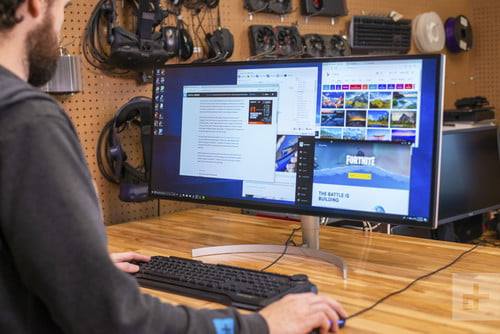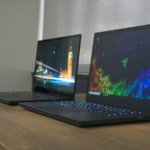No matter if you are a hardcore PC gamer that plays continuously or plays for casual hours, your hardware components can help you make a huge difference between your overall gaming experience, based on if you win or lose the battle.
To get the best out of First Person Shooter FPS games, like sports, racing, and other action games you require a powerful gaming PC with a good quality graphics solution. visit us for good cartoons for children.
You will require a monitor that can display the required amount of action without displaying blurred images, flicker tearing, and lag.
In this guide, we will walk through some tips and advice for gamers so that they can learn how to choose the right monitor that fits in for their needs.
Monitor Panel Type
So, the first thing is to figure out what type of panel you need, whether a TN panel or an IPS panel. Let me add a quick difference so that you can understand your jam.
TN Panels
They have lower latency, the support for refresh rates is high. TN Panels are cheap. But on the other hand, the color reproduction is worse, also they have narrow viewing angles.
IPS Panels
They have better color reproduction and better viewing angles but they are expensive.
Refresh Rate
The refresh rate of a monitor is another important factor that you should look for while finding the best monitor for yourself. A good response time for a gaming monitor is at least 5 ms but for competitive gaming, you will require 1 to 2 ms.
A higher refresh rate equals a smoother image. This will enhance your overall gaming experience. The baseline for refresh rate is 60Hz and the largest number goes into 240 Hz, you can select depending upon your need.
FreeSync & G-Sync
So, in order to use the Sync technologies, you need DisplayPort ports on both your GPU and your monitor. Other than that you will now need a DisplayPort cable to connect both of them.
Sometimes, these can run into problems that they don’t sync up. This can cause screen tearing during gaming.
FreeSync comes from AMD, compatible with AMD GPUs and FreeSync compatible displays. G-Sync comes from Nvidia and it is compatible with G-sync compatible devices only.
Screen Size
Well, people think that buying a larger screen would be better for them but this is not true. Just remember that always buy the size that fits your desk.
People recommend monitor sizes from 24 inches to 27 inches that are considered to be the best for gaming. If you want to buy a large screen then remember that it will come with a larger price tag.
Screen Resolution
Below is a drop down list of some optimal resolutions with the best screen size available for a gaming monitor. The larger the size is, the higher resolution will cost you.
- 1080p and 24 inches
- 1440p and 27 inches
- 4K and 27+ inches
Pixel Response
A gaming monitor should have a fast pixel response as well as a higher refresh rate. The most commonly used pixel response spec is gray to gray that is measured in milliseconds that defines the time taken for a pixel to transition from one shade of gray to another.
If the pixel response is low, the monitor will eliminate the smearing of moving images that provides a smoother picture overall. A gray to gray response of 2 milliseconds or less is normal but if a 4 millisecond gray to gray response is required for a good gaming experience.
Price
Monitors range from a price of even $100 to $3000 or more. Price depends upon the specifications that you want in your monitor.
Final Verdict
So, this was our short guide regarding how to buy a good monitor. We tried our best to add the best tips and advice out there.
I hope that by the end of this article you will understand how to choose the best thing for your use.













